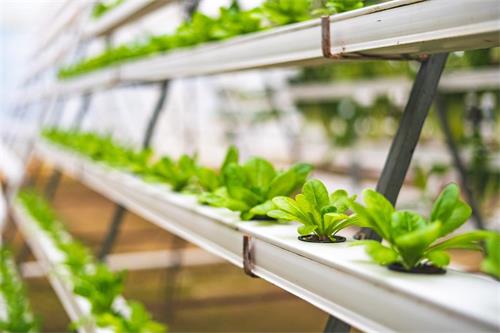
Hydroponic gardening is a method of cultivating plants without soil by using nutrient-rich water solutions. Instead of soil, plants are grown in a soilless medium or directly in water, with all the essential nutrients delivered directly to their roots. This technique allows for precise control over factors such as nutrient levels, pH balance, and water quality, resulting in healthier plants and higher yields.
Advantages of Hydroponic Gardening:
- Faster Growth: Plants grown hydroponically typically grow 30-50% faster than those grown in soil because they have direct access to nutrients and water.
- Higher Yields: Hydroponic systems provide optimal growing conditions, leading to increased yields compared to traditional soil-based gardening.
- Water Conservation: Hydroponic systems use significantly less water than conventional gardening methods since water is recirculated within the system.
- Space Efficiency: Hydroponic systems can be set up vertically or in small spaces, making them ideal for urban environments or areas with limited space.
- Reduced Pests and Diseases: Without soil, hydroponic gardens are less susceptible to soil-borne pests and diseases, reducing the need for pesticides and herbicides.
Types of Hydroponic Systems:
- Deep Water Culture (DWC): In DWC systems, plants are suspended in a nutrient solution with their roots submerged in water. Air pumps provide oxygen to the roots, promoting healthy growth.
- Nutrient Film Technique (NFT): In the Nutrient Film Technique (NFT) systems, a constant stream of nutrient solution flows through a gently sloping channel, providing nourishment to the plant roots. Any surplus solution is gathered and cycled back into the system for continuous circulation.
- Ebb and Flow (Flood and Drain): Ebb and flow systems periodically flood the growing medium with nutrient solution and then drain it away, allowing air to reach the roots.
- Drip System: Drip systems deliver a controlled amount of nutrient solution directly to the plant’s root zone via a network of tubing and emitters.
- Aeroponics: Aeroponic systems mist the plant’s roots with a nutrient solution, allowing them to absorb nutrients and oxygen directly from the air.
Essential Components of a Hydroponic System:
- Growing Medium: While soil is not used, a growing medium is necessary to support the plants and provide stability for their roots. Common mediums include perlite, vermiculite, coconut coir, and rockwool.
- Nutrient Solution: A balanced blend of essential nutrients is dissolved in water to provide plants with everything they need to thrive. Pre-formulated nutrient solutions are available, or you can create your own custom mix.
- Reservoir: The reservoir holds the nutrient solution and often includes a pump to circulate the solution through the system.
- pH Meter and Adjusters: Monitoring and maintaining the pH level of the nutrient solution is crucial for plant health. pH meters and pH adjusters are used to ensure the solution remains within the optimal range for nutrient uptake.
- Lighting: Since hydroponic gardens are often grown indoors or in controlled environments, artificial lighting is essential for providing plants with the energy they need for photosynthesis. LED grow lights have gained widespread popularity owing to their efficient energy utilization and the ability to tailor the light spectrum according to specific plant needs..
Tips for Getting Started with Hydroponic Gardening:
- Start Small: Begin with a simple hydroponic system and a few easy-to-grow plants to familiarize yourself with the process before scaling up.
- Research and Learn: Take the time to educate yourself about hydroponic gardening techniques, best practices, and the specific requirements of the plants you want to grow.
- Invest in Quality Equipment: While it’s possible to DIY many components of a hydroponic system, investing in quality equipment will ensure better results and minimize the risk of problems down the line.
- Monitor and Adjust: Regularly monitor nutrient levels, pH, temperature, and humidity to ensure optimal growing conditions for your plants. Adjust as needed to address any imbalances or issues.
- Be Patient and Persistent: Like any form of gardening, hydroponics requires patience and dedication. Don’t get discouraged by setbacks; instead, view them as learning opportunities to improve your skills and techniques.
Related Articles

Flowers for Cold Climates
Hardy Annual Flowers for Cold Climates
Unlike tender annuals, which wither at the first sign of frost, hardy annuals soldier on, providing constant blooms and beauty.

Pollinator Garden
Choosing the Right Plants for a Pollinator Garden
Pollinator gardens provide vital nourishment for bees, butterflies, birds, and other essential creatures responsible for pollinating plants, thus aiding in the reproduction of various flora.

Basil for Home Gardens
The Most Popular Varieties of Basil for Home Gardens
Basil, with its aromatic leaves and diverse flavors, is a staple herb in many cuisines worldwide.

Geraniums
Popular Varieties of Geraniums for Indoors and Outdoors
Geraniums, belonging to the genus Pelargonium, are flowering plants cherished for their vibrant blooms, aromatic foliage, and versatility in garden landscapes.



